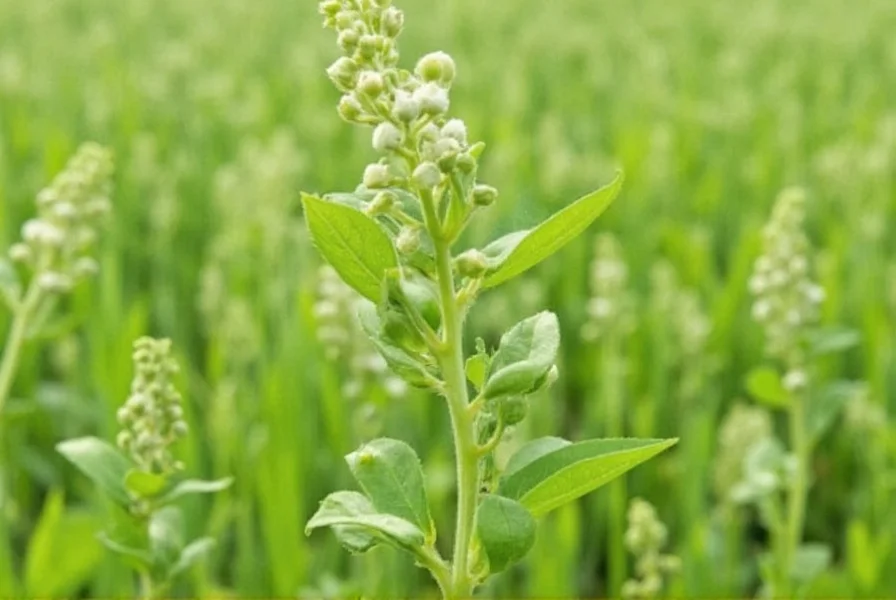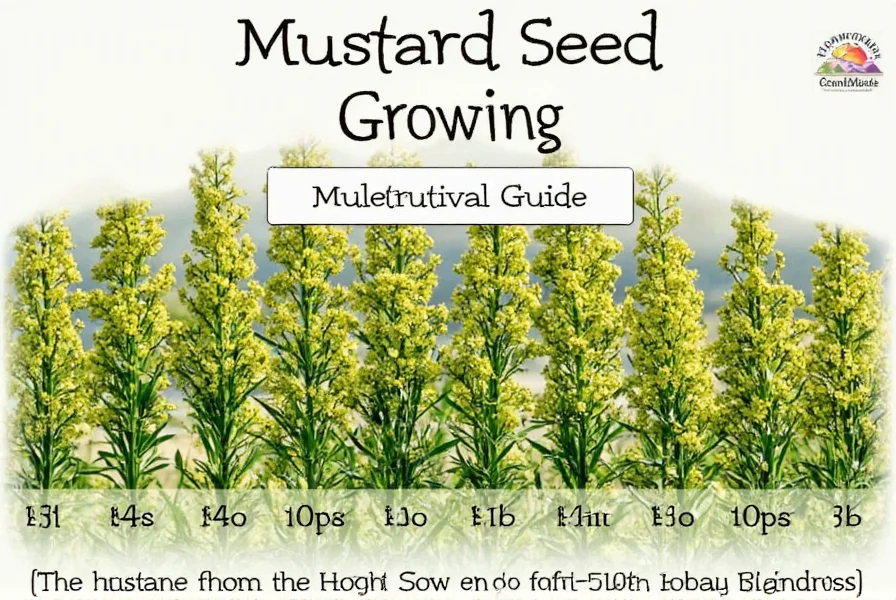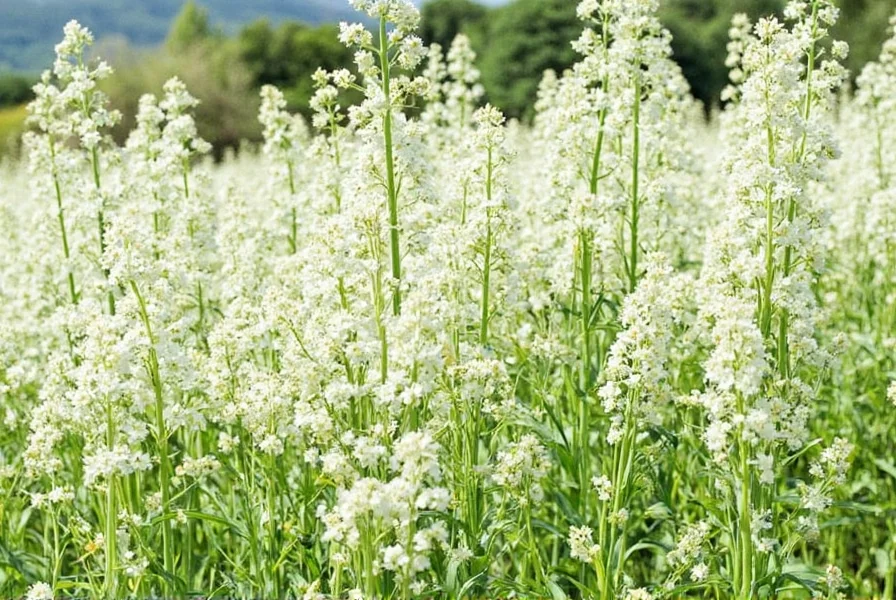Mustard (Brassica juncea and related species) has been cultivated for thousands of years, valued for both its pungent seeds and edible greens. Growing mustard seeds at home offers gardeners a rewarding experience with relatively low maintenance requirements compared to many other crops. Whether you're interested in producing seeds for culinary use, creating your own mustard condiment, or simply expanding your garden diversity, understanding the proper techniques for mustard seed cultivation is essential.
Optimal Growing Conditions for Mustard Seeds
Mustard thrives as a cool-season annual crop, making it ideal for spring and fall planting in most climates. The three primary varieties grown for seed production include yellow mustard (Brassica hirta), brown mustard (Brassica juncea), and black mustard (Brassica nigra), each with slightly different growing requirements.
For successful mustard seed cultivation in home gardens, maintain these key conditions:
- Temperature: Mustard prefers temperatures between 45-75°F (7-24°C). It can tolerate light frosts but bolts (goes to seed prematurely) in sustained heat above 80°F (27°C)
- Soil: Well-draining loam with pH 6.0-7.5 works best. Amend heavy clay soils with compost to improve drainage for healthy mustard seed development
- Sunlight: Full sun (6-8 hours daily) produces the strongest plants and highest seed yields
- Water: Consistent moisture is crucial, especially during germination and flowering. Aim for 1-1.5 inches of water weekly

Planting Mustard Seeds: Timing and Technique
The timing of planting directly affects your mustard seed harvest success. In northern climates, plant seeds 2-4 weeks before the last spring frost date for a summer harvest. For fall crops, plant 8-10 weeks before first frost. Southern gardeners can plant in late fall for winter/spring harvest.
Follow these steps for proper planting:
- Prepare soil by removing weeds and incorporating 2-3 inches of compost
- Sow seeds ¼ inch deep in rows spaced 18-24 inches apart
- Space seeds 1-2 inches apart initially, then thin to 6-8 inches when seedlings reach 2 inches tall
- Water gently but thoroughly after planting
- Germination typically occurs in 7-10 days at optimal soil temperatures
For gardeners with limited space, mustard grows well in containers at least 12 inches deep with adequate drainage. When growing mustard seeds in containers, use a high-quality potting mix and monitor moisture levels carefully.
Caring for Mustard Plants Through Growth Stages
Proper care throughout the growing season ensures robust mustard seed production and quality. During the vegetative stage (first 3-4 weeks), focus on establishing strong root systems and healthy foliage.
| Growth Stage | Duration | Care Requirements |
|---|---|---|
| Germination | 7-10 days | Keep soil consistently moist; avoid drying out |
| Vegetative | 3-4 weeks | Regular watering; light compost application |
| Flowering | 2-3 weeks | Maintain moisture; avoid overhead watering |
| Seed Development | 4-6 weeks | Reduce watering; monitor pod maturity |
Weed control is essential during early growth stages, as mustard competes poorly with aggressive weeds. Apply 2-3 inches of organic mulch after seedlings establish to suppress weeds and maintain soil moisture. Avoid high-nitrogen fertilizers, which promote leafy growth at the expense of seed production.
Managing Pests and Diseases in Mustard Crops
While generally hardy, mustard plants face several common challenges that affect successful mustard seed harvesting. Aphids, flea beetles, and cabbage loopers frequently target mustard plants. Implement these organic control methods:
- Use floating row covers immediately after planting to prevent insect access
- Apply insecticidal soap for aphid infestations
- Introduce beneficial insects like ladybugs and lacewings
- Rotate crops annually to prevent soil-borne disease buildup
Diseases like white rust, downy mildew, and clubroot can devastate mustard crops. Prevent these issues by:
- Avoiding overhead watering to keep foliage dry
- Ensuring proper plant spacing for air circulation
- Removing and destroying infected plant material promptly
- Practicing 3-4 year crop rotation with unrelated plant families
Harvesting Mustard Seeds at Peak Maturity
Timing your mustard seed harvest correctly determines both yield and quality. Seeds mature approximately 80-95 days after planting, depending on variety and growing conditions. Watch for these maturity indicators:
- Lower seed pods turn from green to tan or brown
- Pods become dry and brittle to the touch
- Seeds inside pods darken to their mature color (yellow, brown, or black)
- Approximately 60% of pods on the plant show color change
The optimal harvest window is narrow—too early and seeds won't be fully developed; too late and pods will shatter, dropping seeds. For small plantings, harvest individual branches as they mature. For larger plantings, cut entire plants when 40-60% of pods have changed color.

Processing and Storing Your Mustard Seed Harvest
Proper post-harvest handling ensures your homegrown mustard seeds maintain quality for culinary use. Follow these steps for optimal results:
- Drying: Bundle cut plants and hang upside down in a warm, dry, well-ventilated area for 1-2 weeks until pods are completely dry
- Threshing: Once dry, rub pods between your hands over a clean container to release seeds. Alternatively, place pods in a pillowcase and gently step on them
- Cleaning: Separate seeds from chaff using a fine mesh sieve. Winnowing (using a gentle breeze) helps remove lighter debris
- Storage: Place cleaned seeds in airtight containers away from light and heat. Properly stored seeds maintain viability for 2-3 years
For culinary use, store seeds in glass jars with tight-fitting lids. Keep in a cool, dark pantry for up to 2 years. For planting next season's crop, store seeds in the refrigerator to maintain maximum germination rates.
Troubleshooting Common Mustard Growing Challenges
Even with proper care, gardeners may encounter issues affecting mustard seed yield and quality. Here's how to address common problems:
- Premature bolting: Caused by heat stress or inconsistent watering. Plant earlier in spring or later in fall, and maintain consistent soil moisture
- Poor seed set: Often due to inadequate pollination. Plant companion flowers to attract more pollinators to your garden
- Small seeds: Indicates nutrient deficiency or overcrowding. Thin plants properly and apply balanced organic fertilizer during vegetative growth
- Moldy seeds: Results from harvesting too early or improper drying. Ensure complete dryness before storage and check seeds periodically
Using Your Homegrown Mustard Seeds
Homegrown mustard seeds offer superior flavor compared to store-bought options. Use them in various ways:
- Grind into powder for homemade mustard condiment
- Add whole seeds to pickling recipes for traditional dill pickles
- Toast seeds lightly before use to enhance flavor in Indian and Asian dishes
- Press seeds for small-batch mustard oil production
- Save a portion for next season's planting (select seeds from your healthiest plants)
Experiment with different mustard varieties to discover which performs best in your specific growing conditions and which flavor profiles you prefer for culinary applications.
Frequently Asked Questions
How long does it take for mustard seeds to grow from planting to harvest?
Mustard seeds typically take 80-95 days from planting to seed harvest, depending on the variety and growing conditions. Yellow mustard matures fastest (around 80 days), while black mustard takes longest (up to 95 days).
Can I grow mustard seeds in containers or small spaces?
Yes, mustard grows well in containers at least 12 inches deep with proper drainage. Use quality potting mix, maintain consistent moisture, and place in full sun. Container-grown plants may need more frequent watering than garden-planted mustard.
Why are my mustard plants flowering but not producing seeds?
This usually occurs due to heat stress causing premature flowering without proper seed set, inadequate pollination, or nutrient imbalance. Ensure consistent watering, plant during cooler seasons, and attract pollinators with companion flowers to improve seed production.
How do I prevent mustard seed pods from shattering before harvest?
Harvest mustard plants when 40-60% of pods have turned brown but before they become completely dry and brittle. Cut entire plants and finish drying them upside down in a protected area to catch any seeds that might release during the final drying process.
What's the best way to store mustard seeds for long-term use?
Store cleaned mustard seeds in airtight glass containers away from light and heat. For culinary use, they'll maintain quality for up to 2 years in a cool, dark pantry. For planting purposes, store seeds in the refrigerator to preserve maximum germination rates for 2-3 years.











 浙公网安备
33010002000092号
浙公网安备
33010002000092号 浙B2-20120091-4
浙B2-20120091-4